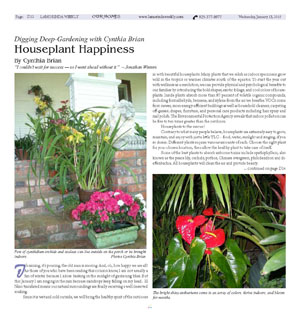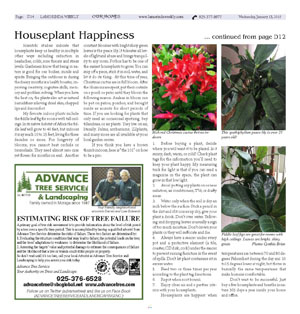|
|
Published January 13, 2016
|
Digging Deep-Gardening with Cynthia Brian
|
| Houseplant Happiness |
| By Cynthia Brian |
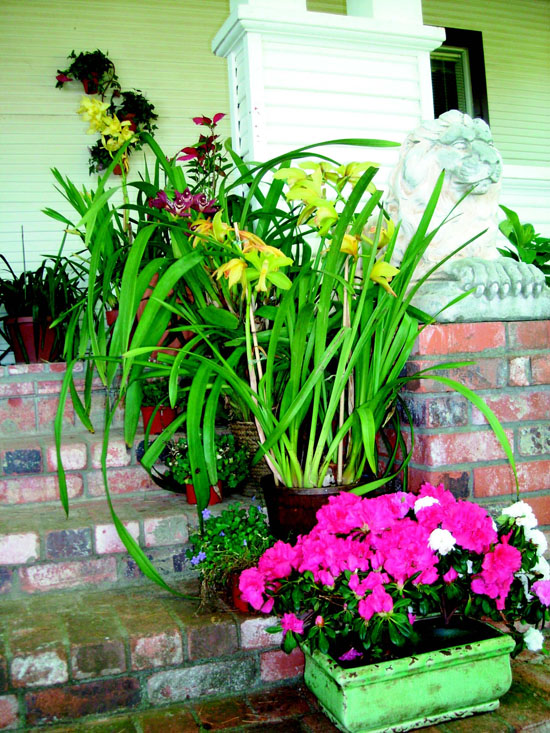 |
| Pots of cymbidium orchids and azaleas can live outside on the porch or be brought indoors. Photos Cynthia Brian |
"I couldn't wait for success ? so I went ahead without it." ~ Jonathan Winters
 It's raining, it's pouring, the old man is snoring. And, oh, how happy we are all! As those of you who have been reading this column know, I am not usually a fan of winter because I adore basking in the sunlight of gardening bliss. But this January I am singing in the rain because raindrops keep falling on my head. El Nino translated means our natural surroundings are finally receiving a well deserved soaking.
It's raining, it's pouring, the old man is snoring. And, oh, how happy we are all! As those of you who have been reading this column know, I am not usually a fan of winter because I adore basking in the sunlight of gardening bliss. But this January I am singing in the rain because raindrops keep falling on my head. El Nino translated means our natural surroundings are finally receiving a well deserved soaking.
 Since it is wet and cold outside, we will bring the healthy spirit of the outdoors in with beautiful houseplants. Many plants that we relish as indoor specimens grow wild in the tropics or warmer climates south of the equator. To start the year out with wellness as a resolution, we can provide physical and psychological benefits to our families by introducing the bold shapes, exotic foliage, and cool colors of houseplants. Inside plants absorb more than 87 percent of volatile organic compounds, including formaldehyde, benzene, and xylene from the air we breathe. VOCs come from newer, more energy-efficient buildings as well as household cleaners, carpeting off-gasses, drapes, furniture, and personal care products including hair spray and nail polish. The Environmental Protection Agency reveals that indoor pollution can be five to ten times greater than the outdoors.
Since it is wet and cold outside, we will bring the healthy spirit of the outdoors in with beautiful houseplants. Many plants that we relish as indoor specimens grow wild in the tropics or warmer climates south of the equator. To start the year out with wellness as a resolution, we can provide physical and psychological benefits to our families by introducing the bold shapes, exotic foliage, and cool colors of houseplants. Inside plants absorb more than 87 percent of volatile organic compounds, including formaldehyde, benzene, and xylene from the air we breathe. VOCs come from newer, more energy-efficient buildings as well as household cleaners, carpeting off-gasses, drapes, furniture, and personal care products including hair spray and nail polish. The Environmental Protection Agency reveals that indoor pollution can be five to ten times greater than the outdoors.
 Houseplants to the rescue!
Houseplants to the rescue!
 Contrary to what many people believe, houseplants are extremely easy to grow, maintain, and enjoy with just a little TLC - food, water, sunlight and singing, if you so desire. Different plants require various amounts of each. Choose the right plant for your chosen location, then allow the healthy plant to take care of itself.
Contrary to what many people believe, houseplants are extremely easy to grow, maintain, and enjoy with just a little TLC - food, water, sunlight and singing, if you so desire. Different plants require various amounts of each. Choose the right plant for your chosen location, then allow the healthy plant to take care of itself.
 Some of the best plants to absorb airborne toxins include spathiphyllum, also known as the peace lily, orchids, pothos, Chinese evergreen, philodendron and dieffenbachia. All houseplants will clean the air and provide beauty.
Some of the best plants to absorb airborne toxins include spathiphyllum, also known as the peace lily, orchids, pothos, Chinese evergreen, philodendron and dieffenbachia. All houseplants will clean the air and provide beauty.
 Scientific studies indicate that houseplants keep us healthy in multiple other ways including reduction in headaches, colds, sore throats and stress levels. Gardeners know that being in nature is good for our bodies, minds and spirits. Bringing the outdoors in during the dreary months is a health booster, improving creativity, cognitive skills, memory and problem solving. When you have the heat on, the plants also act as natural humidifiers relieving dried skin, chapped lips and discomfort.
Scientific studies indicate that houseplants keep us healthy in multiple other ways including reduction in headaches, colds, sore throats and stress levels. Gardeners know that being in nature is good for our bodies, minds and spirits. Bringing the outdoors in during the dreary months is a health booster, improving creativity, cognitive skills, memory and problem solving. When you have the heat on, the plants also act as natural humidifiers relieving dried skin, chapped lips and discomfort.
 My favorite indoor plants include the fiddle leaf fig for rooms with tall ceilings. In its native habitat of Africa the fiddle leaf will grow to 40 feet, but indoors it may reach 10 to 15 feet, living for three decades or more. For longevity of blooms, you cannot beat orchids or bromeliads. They need almost zero care yet flower for months on end. Another constant bloomer with bright shiny green leaves is the peace lily. It tolerates all levels of light and abuse and brings tranquility to any room. Pothos has to be one of the easiest houseplants to grow. You can snip off a piece, stick it in soil, water, and let it do its thing. At this time of year, Christmas cactus are in full bloom. After the blossoms are spent, put them outside on a porch or patio until they bloom the following season. Azaleas in bloom can be put on patios, porches, and brought inside as accents for short periods of time. If you are looking for plants that only need an occasional spritzing, buy tillandsias, or air plants. They live on air, literally. Palms, anthuriums, ZZplants, and many more are all available at your local garden center.
My favorite indoor plants include the fiddle leaf fig for rooms with tall ceilings. In its native habitat of Africa the fiddle leaf will grow to 40 feet, but indoors it may reach 10 to 15 feet, living for three decades or more. For longevity of blooms, you cannot beat orchids or bromeliads. They need almost zero care yet flower for months on end. Another constant bloomer with bright shiny green leaves is the peace lily. It tolerates all levels of light and abuse and brings tranquility to any room. Pothos has to be one of the easiest houseplants to grow. You can snip off a piece, stick it in soil, water, and let it do its thing. At this time of year, Christmas cactus are in full bloom. After the blossoms are spent, put them outside on a porch or patio until they bloom the following season. Azaleas in bloom can be put on patios, porches, and brought inside as accents for short periods of time. If you are looking for plants that only need an occasional spritzing, buy tillandsias, or air plants. They live on air, literally. Palms, anthuriums, ZZplants, and many more are all available at your local garden center.
 If you think you have a brown thumb indoors, here is "the 101" on how to be a pro:
If you think you have a brown thumb indoors, here is "the 101" on how to be a pro:
 1. Before buying a plant, decide where you will want it to be placed. Is it sunny, dark, warm, or cold? Check plant tags for the information you'll need to keep your plant happy. My measuring trick for light is that if you can read a magazine in the space, the plant can grow in that low light.
1. Before buying a plant, decide where you will want it to be placed. Is it sunny, dark, warm, or cold? Check plant tags for the information you'll need to keep your plant happy. My measuring trick for light is that if you can read a magazine in the space, the plant can grow in that low light.
 2. Avoid putting any plants on or near radiators, air conditioners, TVs, or drafty areas.
2. Avoid putting any plants on or near radiators, air conditioners, TVs, or drafty areas.
 3. Water only when the soil is dry an inch below the surface. Stick a pencil in the dirt and if it comes up dry, give your plant a drink. Don't over water. Yellowing and dropping leaves is usually a sign of too much moisture. Don't drown your plants or they will suffocate and die.
3. Water only when the soil is dry an inch below the surface. Stick a pencil in the dirt and if it comes up dry, give your plant a drink. Don't over water. Yellowing and dropping leaves is usually a sign of too much moisture. Don't drown your plants or they will suffocate and die.
 4. Always have a saucer under every pot and a protective element (a tile, coaster, CD disk, cork) under the saucer to prevent ruining furniture in the event of spills. Don't let plant containers sit in excess water.
4. Always have a saucer under every pot and a protective element (a tile, coaster, CD disk, cork) under the saucer to prevent ruining furniture in the event of spills. Don't let plant containers sit in excess water.
 5. Feed two or three times per year according to the plant tag directions.
5. Feed two or three times per year according to the plant tag directions.
 6. Repot when root bound.
6. Repot when root bound.
 7. Enjoy clean air and a prettier interior with your houseplants.
7. Enjoy clean air and a prettier interior with your houseplants.
 Houseplants are happiest when temperatures are between 70 and 80 degrees Fahrenheit during the day and 10 to15 degrees lower at night, but thrive in basically the same temperatures that make humans comfortable.
Houseplants are happiest when temperatures are between 70 and 80 degrees Fahrenheit during the day and 10 to15 degrees lower at night, but thrive in basically the same temperatures that make humans comfortable.
 Don't wait to be successful. Just buy a few houseplants and breathe in nature 365 days a year inside your home and office.
Don't wait to be successful. Just buy a few houseplants and breathe in nature 365 days a year inside your home and office.

|
 Cynthia Brian's Mid-Month Reminders Cynthia Brian's Mid-Month Reminders

 PRUNE roses, berries and crape myrtles this month. Buy bare-root roses locally or to order the David Austin English roses, go to http://www.DavidAustinRoses.com. Use promo code UHA for 20 percent off your order through Feb. 19. PRUNE roses, berries and crape myrtles this month. Buy bare-root roses locally or to order the David Austin English roses, go to http://www.DavidAustinRoses.com. Use promo code UHA for 20 percent off your order through Feb. 19.

 TREES cleanse the air, filter water, clean the air, provide shade and habitat for wildlife. Learn more about the benefits of trees at http://www.AmericanForests.org. TREES cleanse the air, filter water, clean the air, provide shade and habitat for wildlife. Learn more about the benefits of trees at http://www.AmericanForests.org.

 SUBSTITUTE eggplant for any meat dish. Burpee has developed a new flavorful eggplant called "Meatball" with a density and texture that makes it taste like a hamburger, eggplant steak cutlet, and can be used in any recipe calling for meat. SUBSTITUTE eggplant for any meat dish. Burpee has developed a new flavorful eggplant called "Meatball" with a density and texture that makes it taste like a hamburger, eggplant steak cutlet, and can be used in any recipe calling for meat.

 ASHES from your fireplace can be added to the compost pile when you clean your hearth. Make sure they are cold or pour water into the bucket before pouring into the bin. ASHES from your fireplace can be added to the compost pile when you clean your hearth. Make sure they are cold or pour water into the bucket before pouring into the bin.

 PLANT arugula in a pot for winter salads. Seeds grow quickly and the bitter leaves add zing to your dishes. PLANT arugula in a pot for winter salads. Seeds grow quickly and the bitter leaves add zing to your dishes.

 Welcome the rain and bring health and wellness into your home for the New Year because, baby, it's cold outside! Welcome the rain and bring health and wellness into your home for the New Year because, baby, it's cold outside!

 Happy Gardening and Happy Growing! Happy Gardening and Happy Growing! |
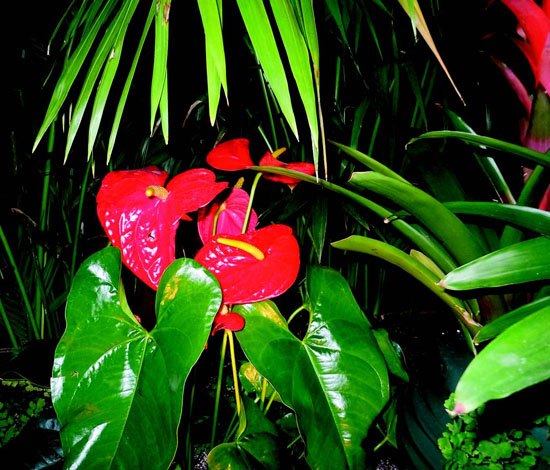 |
| The bright shiny anthuriums come in an array of colors, thrive indoors, and bloom for months. |
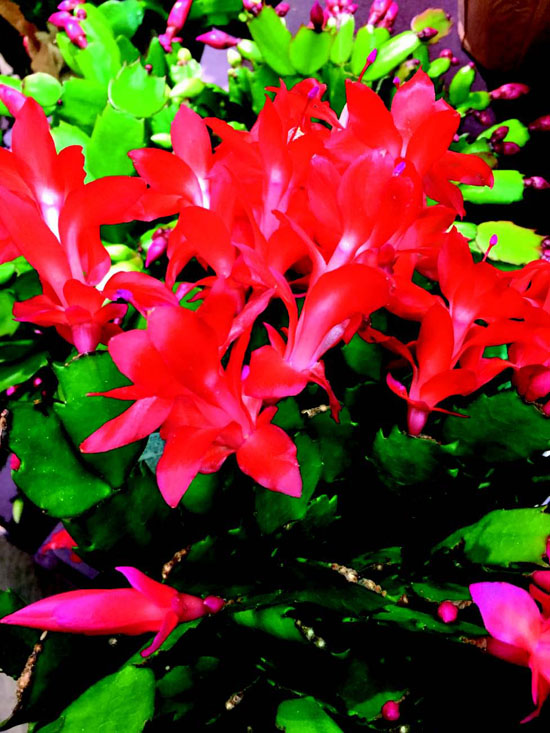 |
| Rich red Christmas cactus thrives indoors. |
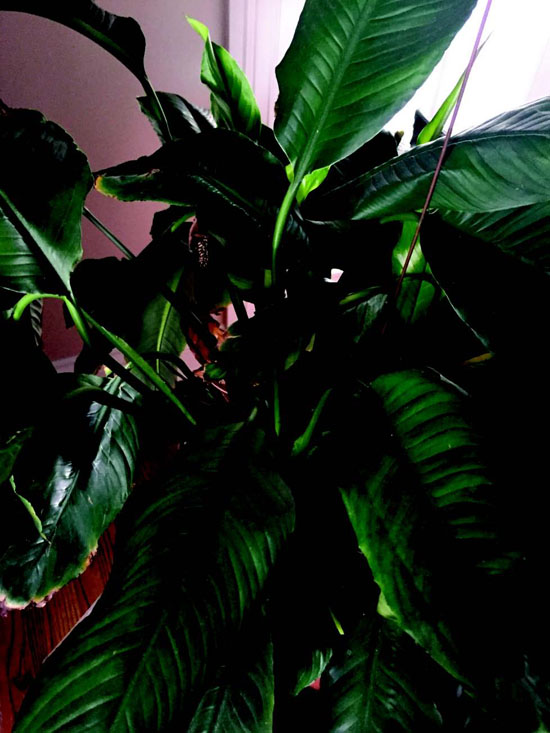 |
| This spathiphyllum peace lily is over 25 years old! |
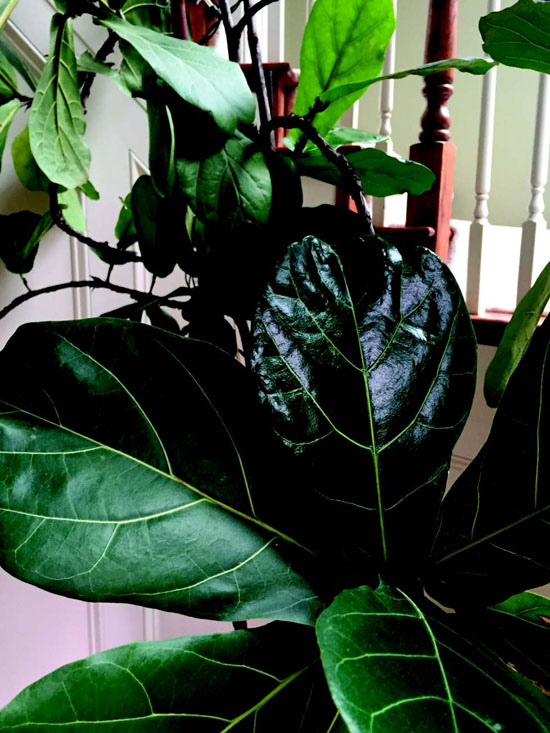 |
| Fiddle leaf figs are great for rooms with high ceilings. Leaves are bright, shiny, green. Photos Cynthia Brian |
 |
| Cynthia Brian gets her 15 minutes by the fountain. (c)2016 Cynthia Brian The Goddess Gardener Starstyle(r) Productions, llc Cynthia@GoddessGardener.com www.GoddessGardener.com 925-377-STAR Tune into Cynthia's Radio show at www.StarStyleRadio.net I am available as a speaker, designer, and consultant. |
|
|
|








